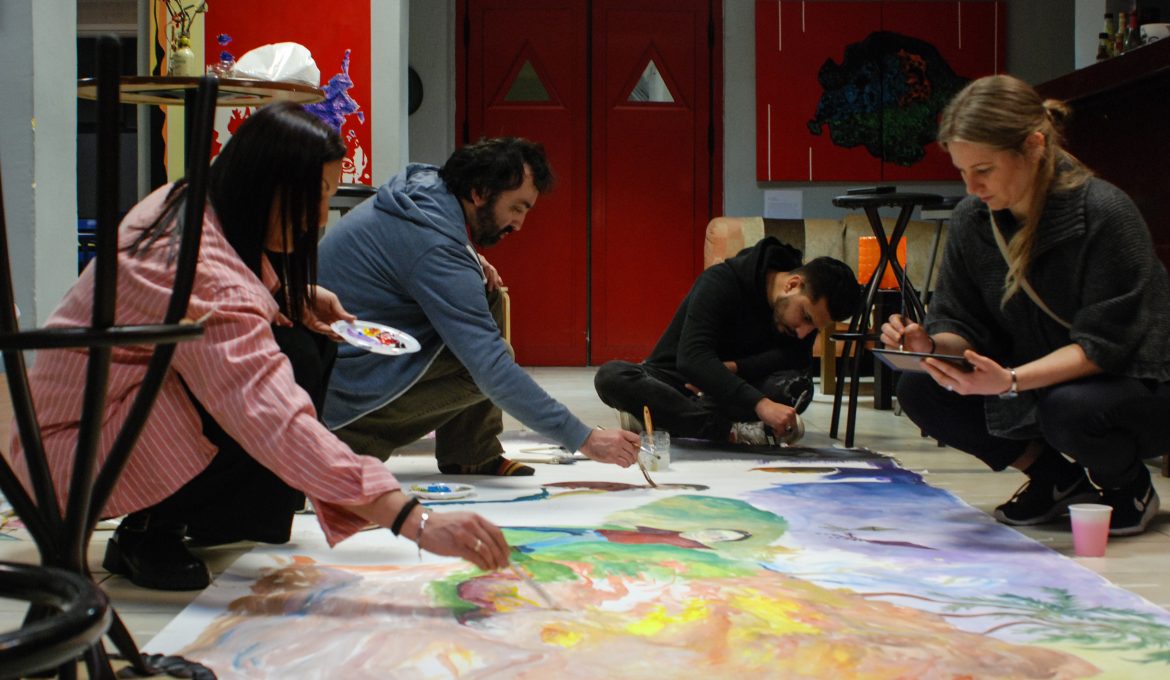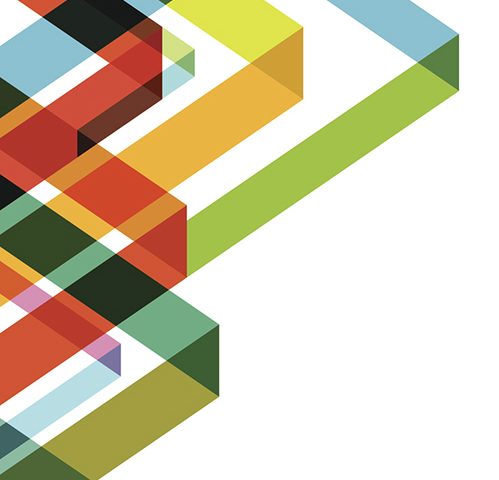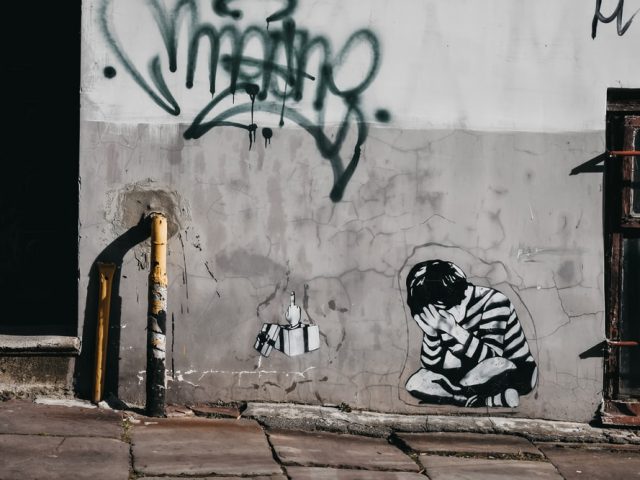Since the media’s portrayal of the perceived “refugee crisis” in Europe reached its peak in 2015, images of bodies on boats, crowded camps, securitized border walls and masses walking across continents have come to dominate the public imaginary, as well as public art installations and exhibitions. How is the refugee subject framed within broader political, social and historical discourses centered at once on notions of hospitality, and exclusion? The violence of borders and related production of ‘crisis’ narratives has also been prevalent on the agendas of large metropolitan museums as well as smaller-scale, grassroots-organized art galleries and community centres.
Symbiosis work aims to question how art and cultural production engages, critiques, and shapes our understanding of contemporary migration, borders, and the global “refugee crisis”.
Collectif MAZI is a grassroots team of artists created in 2018 in Thessaloniki. It is comprised of approx. 30 artists, some of which are refugees others are migrants, while others are local, that share a common passion for arts and creation – the motivation force behind Collectif MAZI; together with the determination of Richard Lusakumunu, who inspired and drives this initiative.
On January 2020 they held the exhibition ‘Muntu ya Simera’ (The Man of Today) at the French Institute of Thessaloniki, supported by UNHCR, NAOMI, Symbiosis and other organisations of the city. In the 100 art pieces presented, the artists showed their own perception of the world and humanity today, using their own experiences of migration and forced displacement in the process of creation.
Short film: Co-creating in movement
Produced by: Symbiosis-School of Political Studies in Greece, Network of Council of Europe
Song: Ana – Vieux Farka Touré fr. Rayhan Khan
Narration: Despina Syrri
Production: Elli Papastergiou
Post-Production: Ljubisa Vrencev
Often with humour, they critically reflect on visual and artistic representations of refugees and migrants, as well as contemporary moments of border and migration “crisis” globally.
Initiatives and exhibitions such as Collectif MAZI and ‘Muntu ya Simera’ bring to the fore core questions of how we understand and how we envisage population movements, migration, integration, exclusion, living and working together. Most importantly, artists themselves, beyond, beside, often without, have engaged in co-production of initiatives, breaking down stereotypes and borders such as “locals”, “migrants”, ‘refugees”, “foreigners”, sharing resources and hope. Often with humour, they critically reflect on visual and artistic representations of refugees and migrants, as well as contemporary moments of border and migration ‘crisis’ globally.
Their works discuss, but are not limited to, discourses on refugeeness, displacement, and rescue; representations of pain and suffering surrounding refugee lives; hospitality towards the stranger; acts of solidarity, resistance across borders; ‘Crisis’ narratives; border policies, border zones, borderlands, ‘welcoming’ or ‘border’ cities; walls, fences, bordering technologies; positive or negative impacts of the humor approach to mediate interaction between migrant/refugee and host communities. Does such approach promotes meaningful interaction and in which way?




